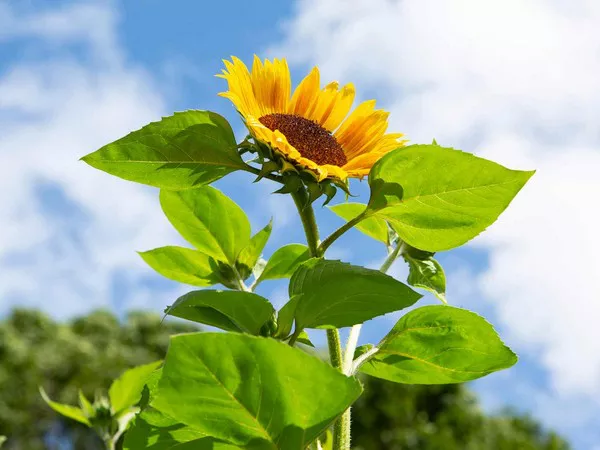Embarking on the journey to plant a sunflower field is a rewarding endeavor that promises not only a stunning visual display but also environmental benefits and potential economic opportunities. Sunflowers (Helianthus annuus) are not just a beautiful addition to the landscape; they also play a crucial role in supporting biodiversity and providing resources for various industries. In this comprehensive guide, we will delve into the intricacies of planting a sunflower field, from selecting the right varieties to ensuring optimal growing conditions.
Choosing the Right Sunflower Varieties
The first step in creating a vibrant sunflower field is selecting the right varieties for your specific goals. With numerous cultivars available, each varying in size, color, and purpose, it’s essential to choose varieties that align with your vision. Whether you’re cultivating sunflowers for ornamental purposes, oilseed production, or wildlife habitat enhancement, understanding the characteristics of different varieties is crucial.
When selecting sunflower varieties for ornamental purposes, consider vibrant options such as ‘Autumn Beauty’ or ‘Velvet Queen.’ For those aiming for oilseed production, high-yielding cultivars like ‘Hybrid 89’ or ‘Sunzilla’ are excellent choices. Wildlife enthusiasts may opt for varieties with smaller heads, such as ‘Teddy Bear’ sunflowers, which attract birds and pollinators.
Site Selection and Preparation
Sunflowers thrive in full sunlight, so selecting an appropriate site is paramount for their successful growth. Choose a location with well-drained soil and minimal competition from trees or large structures that could cast shadows. Conduct a soil test to determine the pH and nutrient levels, ensuring the soil is rich in organic matter.
Prepare the soil by clearing debris and weeds, and incorporate organic matter such as compost to improve fertility. The ideal soil pH for sunflowers is between 6.0 and 7.5. Additionally, sunflowers are known for their ability to tolerate various soil types, but they perform best in loamy soils.
See Also: How to make pressed flower art?
Planting Sunflower Seeds
Now that you’ve chosen your sunflower varieties and prepared the site, it’s time to plant the seeds. Sunflower seeds can be sown directly into the soil after the last frost date in your region. Space the seeds according to the recommended spacing for the chosen variety, typically ranging from 18 to 36 inches apart.
Plant the seeds at a depth of 1 to 1.5 inches, ensuring good seed-to-soil contact. Water the area thoroughly after planting to encourage germination. Keep in mind that sunflowers are relatively low-maintenance plants, but consistent watering during dry spells is crucial, especially in the early stages of growth.
Caring for Your Sunflower Field
As your sunflowers begin to grow, implementing proper care practices is essential to ensure healthy and robust plants. Regular monitoring for pests and diseases is crucial, and organic methods of pest control should be prioritized to maintain environmental sustainability. Keep an eye out for common pests like aphids and caterpillars, and address any issues promptly.
Fertilize your sunflowers with a balanced, all-purpose fertilizer during the growing season, following the recommended application rates. Sunflowers are relatively resilient, but providing them with the necessary nutrients will promote vigorous growth and enhance flower production.
Supporting Tall Varieties
Certain sunflower varieties, particularly those bred for oilseed production, can grow quite tall and may require additional support. Consider staking or providing a support structure for these varieties to prevent breakage and ensure the stability of the plants. This is especially important in areas prone to strong winds.
Harvesting Sunflowers
The timing of sunflower harvest depends on the intended purpose. For those growing sunflowers for ornamental use, harvesting can begin when the flowers are fully open. Cut the stems in the morning or evening when the plants are well-hydrated, and immediately place them in water to maximize vase life.
If you’re cultivating sunflowers for oilseed production, the optimal time to harvest is when the back of the flower heads turns yellow and the bracts begin to dry. Harvesting too early may result in lower oil content, while waiting too long can lead to seed shattering.
Utilizing Sunflower Byproducts
After harvesting sunflower seeds for oil production, consider utilizing the byproducts for various purposes. Sunflower stalks and leaves can be used as mulch or added to compost to enrich soil fertility. Additionally, sunflower hulls, the outer shell of the seeds, have applications in livestock feed, bedding material, and even as a substrate for mushroom cultivation.
Conclusion
Planting a sunflower field is a fulfilling and multifaceted endeavor that requires careful planning and attention to detail. From selecting the right sunflower varieties to nurturing the plants through growth and harvest, each step plays a crucial role in the success of your sunflower field. Whether you’re cultivating sunflowers for their beauty, oilseed production, or environmental benefits, following these guidelines will set you on the path to creating a spectacular sunflower field that not only captivates the eye but also contributes to a healthier ecosystem.


